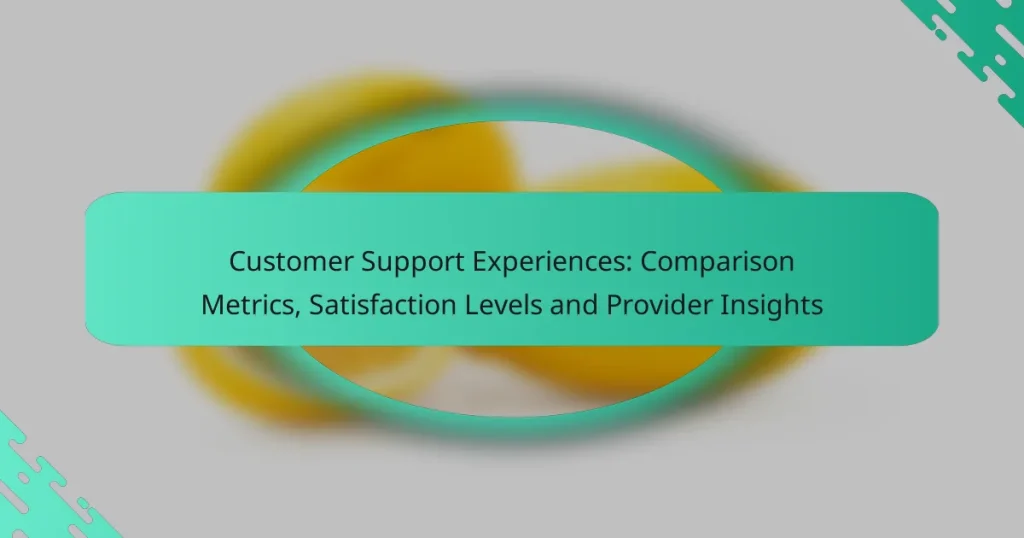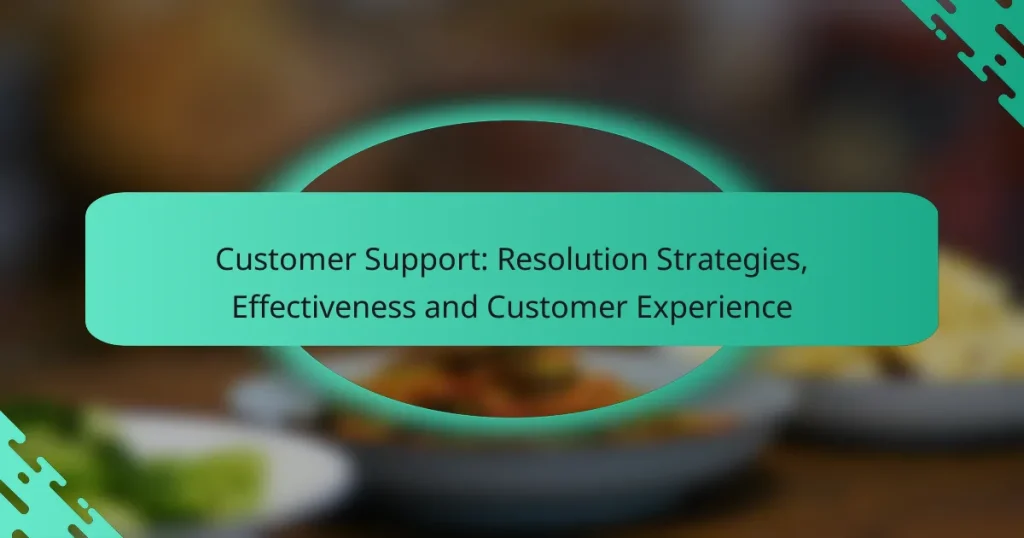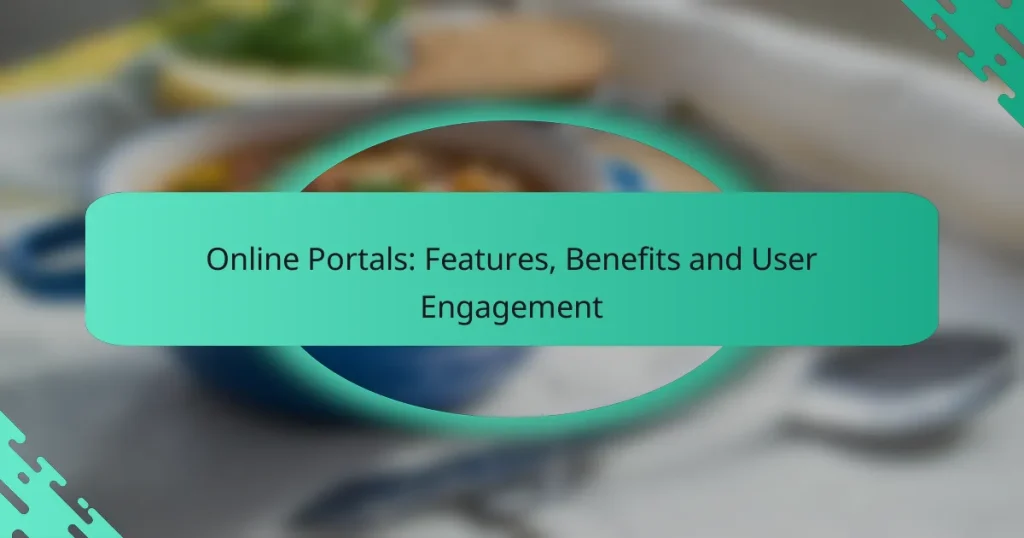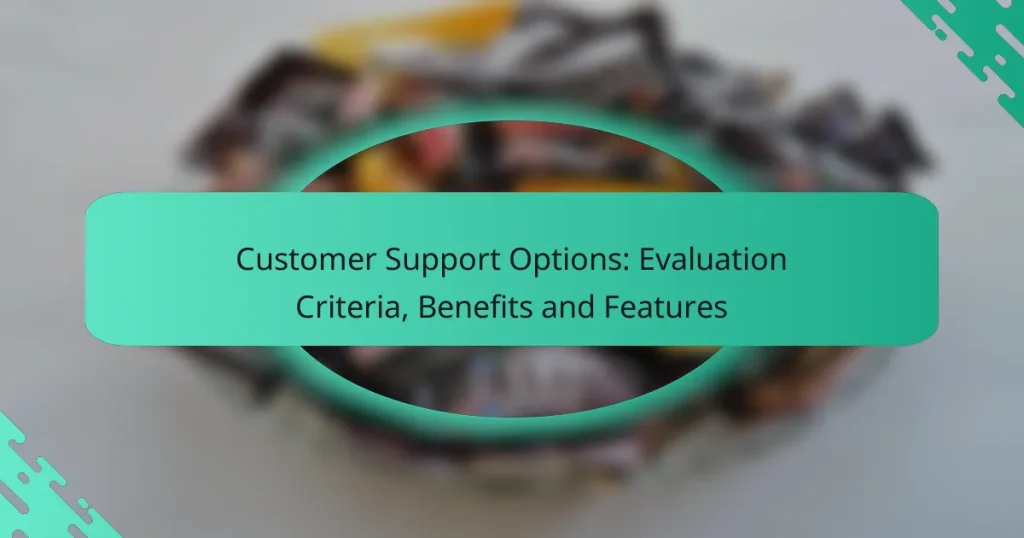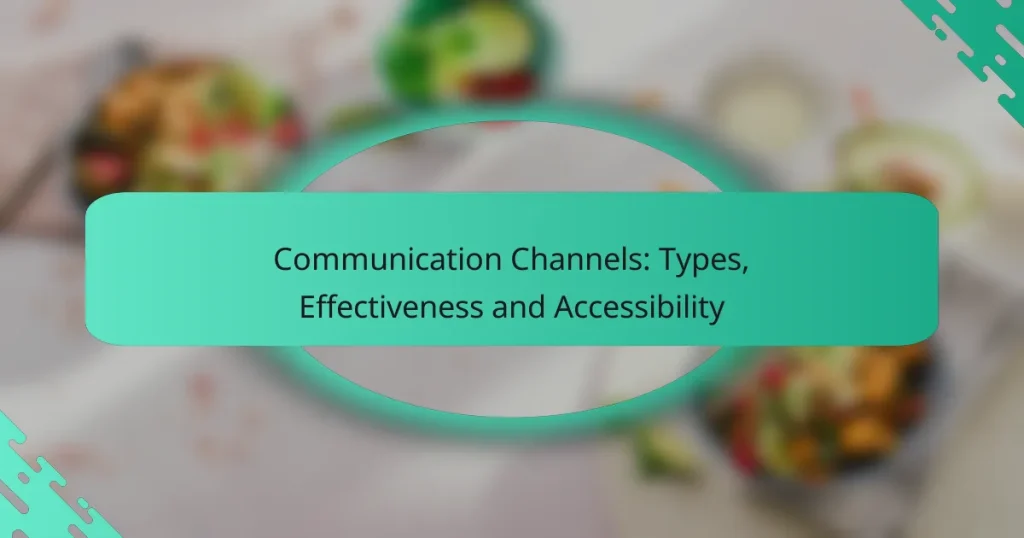Local service providers play a crucial role in enhancing customer support by leveraging modern communication tools and strategies. By focusing on personalized interactions and effective communication, they can significantly improve customer satisfaction and loyalty. Implementing structured processes for managing complaints ensures that customers feel valued and heard, fostering a positive service experience.
Customer Support: Resolution Strategies, Effectiveness and Customer Experience
Online Portals: Features, Benefits and User Engagement
Customer Support Options: Evaluation Criteria, Benefits and Features
Communication Channels: Types, Effectiveness and Accessibility
How can local service providers improve customer support?
Local service providers can enhance customer support by adopting modern communication tools and strategies that foster engagement and responsiveness. Key improvements include implementing live chat systems, utilizing customer feedback tools, training staff for effective communication, and offering multi-channel support.
Implementing live chat systems
Live chat systems enable real-time communication between customers and support staff, significantly reducing response times. By integrating chat features on websites or mobile apps, local service providers can address inquiries instantly, leading to higher customer satisfaction.
When choosing a live chat solution, consider factors such as ease of integration, mobile compatibility, and analytics capabilities. Popular options include Zendesk Chat and LiveChat, which offer various pricing plans suitable for small to medium-sized businesses.
Utilizing customer feedback tools
Customer feedback tools help local service providers gather insights on service quality and customer preferences. Surveys, feedback forms, and review platforms can be employed to collect valuable data that informs service improvements.
Implementing tools like SurveyMonkey or Google Forms allows businesses to create tailored surveys that can be sent post-service. Regularly analyzing this feedback can lead to actionable changes that enhance overall customer experience.
Training staff for better communication
Effective communication is crucial for delivering excellent customer support. Training staff in active listening, empathy, and problem-solving skills can significantly improve interactions with customers.
Consider conducting regular workshops or role-playing scenarios to practice communication techniques. This investment in staff development can lead to more positive customer interactions and increased loyalty.
Offering multi-channel support
Multi-channel support allows customers to reach out through various platforms, including phone, email, social media, and live chat. This flexibility caters to different customer preferences and can enhance overall satisfaction.
To implement multi-channel support effectively, ensure that all channels are well-integrated, allowing for seamless transitions between them. Tools like Hootsuite or Freshdesk can help manage interactions across multiple platforms efficiently.
What are the best practices for customer support in local services?
Effective customer support in local services hinges on personalized interactions, clear communication, and up-to-date information. Implementing best practices in these areas can significantly enhance customer satisfaction and loyalty.
Personalizing customer interactions
Personalizing customer interactions involves addressing clients by name and tailoring responses based on their specific needs and history. This approach fosters a sense of connection and trust, making customers feel valued.
For example, a local plumbing service can keep records of previous jobs for each customer, allowing representatives to reference past issues when addressing new inquiries. This not only improves efficiency but also enhances the overall customer experience.
Setting clear response time expectations
Setting clear expectations for response times helps manage customer anxiety and builds trust. Inform customers about typical wait times for replies and service appointments, which can vary based on demand and service type.
For instance, a local electrician might communicate that initial responses will occur within a few hours, while service appointments may take one to three days. This transparency can prevent frustration and improve customer satisfaction.
Regularly updating service information
Regularly updating service information ensures customers have access to the latest offerings, pricing, and availability. This practice can prevent misunderstandings and enhance customer trust in your brand.
Consider using your website and social media to share updates about new services, changes in pricing, or special promotions. For example, if a local landscaping service introduces a new seasonal package, announcing it promptly can attract interest and drive sales.
How do local service providers handle customer complaints?
Local service providers typically manage customer complaints through structured processes that prioritize resolution and customer satisfaction. They often implement standardized procedures to address issues promptly and effectively, ensuring that customers feel heard and valued.
Establishing a clear complaint resolution process
A well-defined complaint resolution process is crucial for local service providers. This process usually includes steps such as acknowledging the complaint, investigating the issue, and providing a timely response. For example, a provider might aim to resolve complaints within 48 hours to maintain customer trust.
Providers should communicate their resolution process clearly to customers, often through their websites or service agreements. This transparency helps set expectations and encourages customers to voice their concerns without hesitation.
Empowering staff to resolve issues
Empowering staff to handle complaints effectively is essential for local service providers. This involves training employees to make decisions on the spot, which can lead to quicker resolutions and improved customer satisfaction. For instance, allowing staff to offer discounts or service credits can help mitigate customer frustration.
Additionally, providers should encourage a culture of accountability where employees feel responsible for customer outcomes. Regular training sessions can equip staff with the skills needed to manage complaints confidently and empathetically, enhancing the overall customer experience.
What tools can enhance customer support for local services?
To improve customer support for local services, utilizing specialized tools can streamline communication and issue resolution. Key options include Customer Relationship Management (CRM) software and ticketing systems, both of which help manage customer interactions effectively.
Using CRM software like HubSpot
CRM software such as HubSpot centralizes customer information, allowing local service providers to track interactions and manage relationships efficiently. By organizing data, businesses can personalize communication and follow up on inquiries promptly.
When selecting a CRM, consider features like automation, reporting, and integration with other tools. For instance, HubSpot offers a free tier that can be beneficial for small businesses, while paid plans provide advanced functionalities for larger operations.
Implementing ticketing systems like Zendesk
Ticketing systems like Zendesk help local service providers manage customer requests systematically. These platforms allow users to create, track, and resolve tickets, ensuring no customer issue is overlooked.
When implementing a ticketing system, focus on ease of use and responsiveness. Zendesk offers customizable workflows and analytics to monitor performance, which can enhance service quality. Local businesses should ensure their team is trained to use the system effectively to avoid common pitfalls like delayed responses or miscommunication.
How do response times affect customer satisfaction?
Response times significantly influence customer satisfaction by directly impacting how customers perceive service quality. Quick responses often lead to higher satisfaction levels, as customers feel valued and prioritized.
Faster responses lead to higher satisfaction
When service providers respond quickly, customers are more likely to feel their issues are being taken seriously. Studies show that response times in the range of a few minutes can boost satisfaction by a notable percentage, while delays of several hours can lead to frustration and dissatisfaction.
For example, a local plumbing service that answers calls within 10 minutes is likely to receive more positive feedback than one that takes over an hour. This immediate engagement helps build trust and loyalty among clients.
Setting benchmarks for response times
Establishing clear benchmarks for response times is essential for maintaining high customer satisfaction. Many businesses aim for initial responses within a few minutes for urgent inquiries and within a few hours for less critical issues.
Consider implementing a tiered response system: urgent requests receive immediate attention, while standard inquiries are addressed within a specified timeframe. Regularly reviewing these benchmarks can help identify areas for improvement and ensure that customer expectations are met.
What are the key metrics for measuring customer support success?
Key metrics for measuring customer support success include customer satisfaction scores, response times, and resolution rates. These indicators help businesses assess the effectiveness of their support teams and identify areas for improvement.
Customer Satisfaction Score (CSAT)
Customer Satisfaction Score (CSAT) is a direct measure of how satisfied customers are with the support they receive. Typically gathered through post-interaction surveys, CSAT is often expressed as a percentage, with higher scores indicating better service quality. Aim for a CSAT score above 80% to reflect strong customer approval.
To effectively use CSAT, ensure that surveys are brief and targeted. Ask specific questions about the interaction, such as, “How satisfied were you with the resolution of your issue?” This approach provides actionable insights into customer perceptions.
First Response Time (FRT)
First Response Time (FRT) measures how quickly a customer receives an initial reply after submitting a support request. A shorter FRT often leads to higher customer satisfaction, with ideal response times generally under 30 minutes for live chat and a few hours for email support.
To improve FRT, consider implementing automated responses for common inquiries and ensuring that your support team is adequately staffed during peak hours. Regularly monitor FRT to identify trends and adjust resources accordingly.
Resolution Rate
Resolution Rate indicates the percentage of customer issues resolved on the first contact. A high resolution rate, ideally above 70%, signifies effective support processes and knowledgeable staff. This metric is crucial for assessing the efficiency of your customer support operations.
To enhance your resolution rate, invest in training for support agents and provide them with access to comprehensive knowledge bases. Tracking this metric over time can help identify recurring issues that may need systemic solutions.
